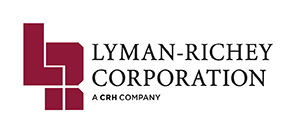SAFETY DESK: Backing Up
STOCK IMAGE
By SHAWN CASSIDY
Field Safety Specialist, Lyman-Richey Corporation
Operating heavy equipment or a motor vehicle is inherently a hazardous task; however, backing up creates more risk for incidents to occur.
According to the National Safety Council, backing accidents cause 500 deaths and 15,000 injuries per year on average. All too often unnecessary backing is responsible for injuries or property damage incidents. It is important to consider the hazards of backing up and what can be done to mitigate them.
Because of the number of blind spots, backing leaves drivers and operators at more risk for error resulting in damage or injury. Fatalities of ground personnel are some of the most serious risks.
The Occupational Safety and Health Association says that dump trucks, followed by semi-trucks and ordinary pickups, are responsible for the majority of the back over incidents on the job in the past 10 years. Outside of struck-by incidents involving ground personnel, there are many other hazards to consider, including:
Less visibility/more blind spots
Fixed Objects
Moving equipment, vehicles, and pedestrians
Uneven terrain (construction sites)
There are several best practices and safeguards we can use to mitigate the hazards of backing up, including:
DON’T BACK UP - The single best way to prevent backing-related incidents is to eliminate backing as much as possible. Most work areas and tasks can be set up in such a way that backing up is not necessary. Pre-planning movements can eliminate unnecessary backing.
CONSIDER PARKING - Look for pull-through spaces when choosing your parking spot, eliminating a scenario in which your first move is backing up and allowing you to easily pull forward when you’re ready to leave.
GET OUT AND LOOK - If you need to back up after being in a fixed position, complete a walk around of your vehicle. This allows you to be aware of what is in your blind spots prior to making a move.
GET A SPOTTER - If backing is necessary and there are hazards such as other ground personnel or fixed objects in the area, then a spotter is necessary. Always consider the additional hazards created when a spotter is used in a work area with moving equipment or vehicles. In addition, whenever you can be a spotter for another driver, do so! Helping our coworkers get positioned will allow us to work more efficiently.
MAKE IT SEEN - Mark fixed objects so they are more visible to those operating a motor vehicle or heavy equipment in a work area.
BUILD A WALL - Place protective barricades to protect critical or expensive equipment from struck-by incidents.
DISCUSSION QUESTIONS
Are we doing a lot of unnecessary backing during our work tasks?
Do you Get Out And Look every time?

